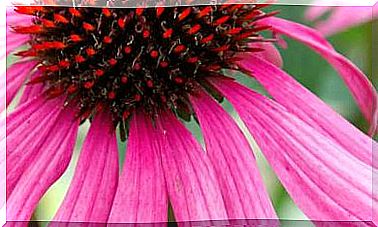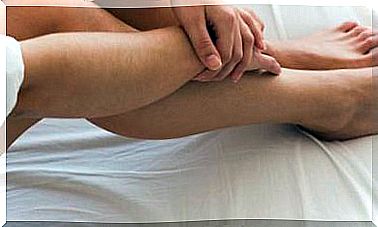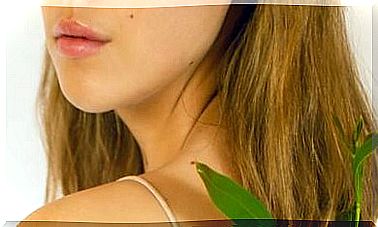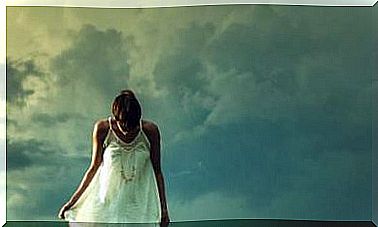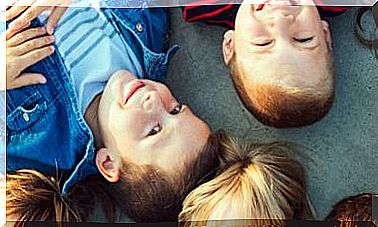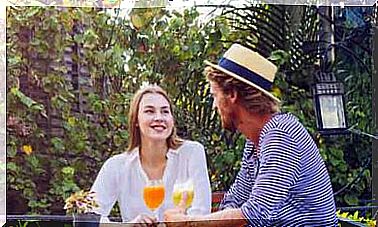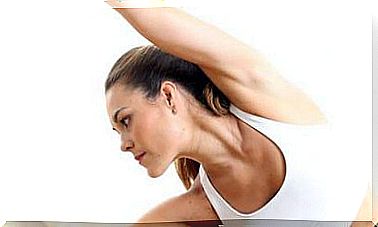8 Exercises To Improve Posture With RPG
Through RPG (Global Postural Reeducation) a person can perceive what their postural imbalances are and what exercises allow them to avoid them.
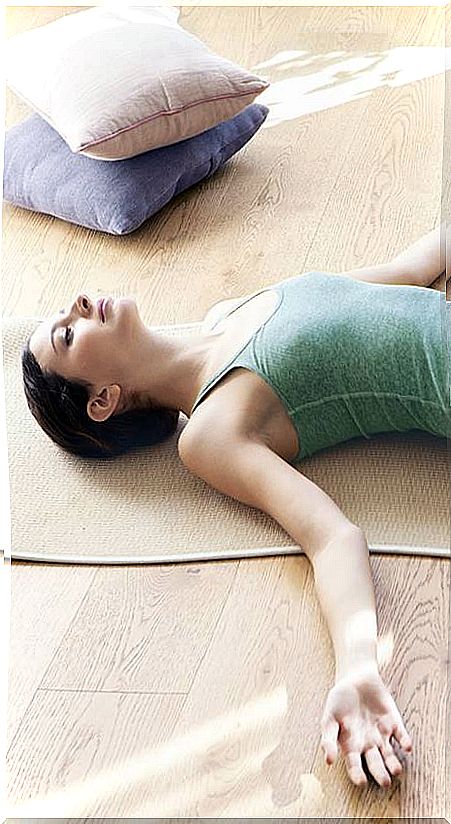
The muscles do not stop working : when we breathe, when we stand upright, when we walk… they are in constant activity and, sometimes, in permanent tension.
The RPG or Global Postural Reeducation allows us to become aware of how our body is and reposition it for its optimal functioning.
According to the RPG, all muscles are connected and, when one becomes unstable, tense or contracted, it causes the rest of the muscles, tendons and fasciae that make up the chain to which that muscle belongs to relocate through imbalances and tensions to counteract the pain.
Thus, an imbalance in the pelvis can be the cause of an apparently shorter leg; a tension in the diaphragm, of a lumbar pain; and flaccidity in the buttocks, knee pain.
Postural diagnosis: how to detect and correct bad posture?
Two years ago, walking down the street, I sprained my ankle. But I forgot about the incident, and kept walking.
After a few months, I started to feel severe pain in my lower back. First, I attributed it to excessive hours of work in front of the computer; later, that I had overloaded carrying weight in a recent move; until the pain became unbearable and I turned, on the recommendation of a friend, to an RPG specialist.
For an hour the therapist exhaustively analyzed my body, my posture, my way of walking, breathing, moving and my particular history of “accidents”. He concluded that my low back pain was the result of a sprained ankle that I had suffered a long time ago!
“How can it be?” I asked, astonished, “but it happened months ago … and my ankle doesn’t hurt.”
His explanation was simple and clear: “Our body is a global entity and is connected by muscle chains. Muscles do not work in isolation and, when one suffers a trauma, the others adapt and compensate to avoid pain.”
When I sprained my ankle, the muscles that stabilize the joint automatically contracted to protect the injured ligaments.
I myself – explained the therapist – unconsciously and to avoid the pain I took care of changing the supports on my feet to walk. With this, both the knee and the hip modified their position to adapt to the new way of walking.
So did the pelvis, which was tilted for balance, thereby promoting tension in the lower back. In turn, the rest of the back muscles tried to balance this umbar decompensation with others in different areas of the spine.
After months of juggling and straining different muscles, my lower back did not hold and contracted sharply to protect itself.
The method of Global Postural Reeducation
The RPG, created in 1981 by Phillipe Souchard, a physiotherapist of French origin, is based on a paradox: the same muscles that keep us upright, at the same time, crush us.
Classify the muscles into two large groups:
- Dynamic or phasic. They are the ones who perform large movements and can be distended by factors such as sedentary lifestyle; for example, the abs.
- Static or tonic. Its activity is constant: stand upright or support your back. Among them are the spinals of the spine. The latter group, which makes up 80% of the skeletal muscles, tends to contract and shorten frequently. When this happens, there are deviations and, as a consequence, joint compensations. RPG investigates how static muscles work in order to rectify those that are not working properly.
RPG courses are taught to doctors and physiotherapists : there are six thousand graduates in the world. It is not a gymnastics, but a way to harmonize the body and prevent new blockages or ailments.
Postural reeducation is done by stretching those that are shortened, removing excess tone from those who are overloaded, or strengthening those that need it.
How are the Global Postural Reeducation (RPG) sessions?
RPG allows the patient to become aware of how their body is and how it should be to function properly.
According to José María Llagostera, a physiotherapist specializing in RPG, the most important thing is the patient’s awareness of how his body is. “It is essential to see how you carry your body, and how you would have to carry it for it to work harmoniously.”
The first thread that the therapist pulls to carry out research and therapy is that of pain, which directs him to the real cause of the ailment. The therapist “reads” which muscles are tense or shortened to figure out the reason for that tension or ailment.
Unlike other treatments and therapies that focus on the painful area, RPG proposes global – and not local – stretches to balance the body.
Once the therapist has thoroughly studied the body to detect the cause of the pain, he proposes a series of stretching exercises through which he can experience how it feels when his body is in good posture.
When a bad habit is deeply ingrained, such as a crooked head, it is difficult that when the therapist aligns it, the patient has the feeling that this is the correct posture. There must be a change in the internalized mental pattern, which requires some time to adapt.
This manual and individualized task is not always easy, since the cause is usually overlapped by different muscular compensations. Each person is unique and manifests differently, which is why no two RPG treatments are the same.
The work usually lasts 8 to 10 individual sessions of one hour. Between each one of them, specific exercises are carried out at home and the new session allows to verify the progress or vary the exercises.
Each is accompanied by a deep breath, which allows the body to relax and function harmoniously.
Benefits of RPG: Eliminate Pain and Frustration
According to the WHO, 75% of the world’s population suffers from pathologies derived from muscle aches or pains at some point in their lives .
RPG is very effective both to regain bodily harmony and to solve very diverse situations, from spinal problems (herniated discs, scoliosis, hyperlordosis …) to flat feet, numbness in the hands, detached scapulae, sunken chest …
Even people who are 1 or 2 cm short of height to oppose a security body can obtain them by aligning their body well with RPG.
The versatility of the RPG allows it to also be beneficial for children, teenagers or the elderly. When a child or adolescent stops practicing a sport or activity because they get tired, perhaps it is because some posture acquired in their daily life (when sitting in front of the computer, sleeping or walking) blocks their energy.
On many occasions, muscle pathologies are the result of stress, anxiety, sedentary lifestyle or misuse of the body, and are accompanied, not only by pain, but also by mood and character changes. Some contractures, shortening or tension in turn reflect mental attitudes.
Through stretching exercises and deep and conscious breathing, RPG allows you not only to free yourself from physical discomfort, but also from the internal discomfort that these entail.
After the first sessions, the person already begins to notice the effects : not only how his body frees itself from pain, but also how the frustrations, complexes and backpacks that he carried, also disappear.
Basic exercises of global postural reeducation
1. Feel the body
It involves sitting with the soles of the feet together, one facing the other, bending the knees. The back and neck are stretched, as if they were gently stretching our head upwards.
You have to breathe about ten times feeling the global benefit. With the help of the RPG therapist, it is easy to feel the posterior muscle chain stretch in this pose.
It is very suitable in scoliosis.
2. Stand and walk correctly
Lumbar area
When the lumbar area is pushed inward, there is a deviation of the spine. To compensate, the upper back area recedes, while the shoulders rotate forward and the cervicals and head also tilt, bringing the gaze to the ground.
This very common position causes a blockage in the knee joints, which hyperextend backwards ( genu recurvatum ), as well as poor support of the soles of the feet , which impairs the balance of the body.
The first step to correct bad posture is to become aware of how we are in it and how the tensions and decompensations that it causes in the rest of the body affect us.
The next step is to achieve a good alignment. To do this, you have to literally feel your head on your shoulders and look straight ahead. The head and shoulder line runs perpendicularly through the pelvis, hips, and knees.
It is important to support your feet well and notice how the abdomen flattens. With the body aligned in this way, breathe about ten times to become aware of the posture and its benefits.
Bent or twisted knees
When the knees are bent inwards in genu valgus, there is an imbalance in the pelvis that affects both the hips and the spine, causing tension and blockages in different parts of the body.
It is very common that, when this happens, the person presents flat feet. The RPG corrects them without templates by realigning legs and knees.
On the other hand, when the knees bent outwards in genu varus (3b) they cause decompensation in the pelvis, hips and spine, and in the lower part they cause cavus feet.
Correct foot support and walking dynamics
When we are standing, the plants must be well supported on the ground to allow the balance of the body.
The feet should be supported at three points: the first and fifth metatarsals, as well as at a point in the center of the heel.
When walking, it is necessary to feel how the sole of each foot is resting on the ground, and to become aware of pressing the three points mentioned above, as if it were a tripod.
When taking the next step, after raising one foot, you also have to feel how it rests, first in the center of the heel, and then, at the same time, on the first and fifth metatarsals.
3. Global postural reeducation: the dancer
This posture must be very carefully coordinated between the therapist and the patient.
A triangular cushion or other inclined plane is used for support, so that the feet are inclined upwards.
With the knees slightly bent, the torso leans forward while remaining straight.
The therapist helps to stretch the posterior muscle chain, from the feet to the nape of the neck.
4. Looking ahead
The iris centered between the lids is an excellent indicator of body alignment.
By bringing the gaze to the front, we make sure that the neck, shoulders and spine are well positioned.
When the eyes look down, they offer a clear indication that the body is misaligned, so that the posture we maintain is not beneficial for the spine and the rest of the body.
Aligning your gaze well is a way to begin to correct a bad postural habit.
5. 4 simple exercises to correct posture at home
These exercises can be carried out without the help of a therapist.
When performing them, the lumbar, thoracic and cervical areas are stretched, as well as the arms, abductors and the soles of the feet.
Do not go from one exercise to another if you feel pain.
- Lying on your back, bend your legs and place the soles of your feet on the floor, knees hip-width apart. Stretch your arms and turn your palms towards the ceiling. Stretch your neck and pay attention that your lower back touches the floor. Breathe slowly and gently ten times feeling the benefits of this pose.
- Bring the soles of your feet together and allow your knees to spread out to the sides. Try to keep your abdomen straight and your lower back, which is still in contact with the ground, does not curve. Breathe about ten times in this pose.
- Next, turn the balls of your feet outward, making sure that the soles point to the sides and not down. Try not to move your back. In this position take ten full breaths.
- Stretch your legs and, without taking your lower back off the floor, form a “V” with both feet, joining your heels and with your toes focused towards the ceiling. If you notice that your back arches when you straighten your knees, keep them slightly bent. Take ten breaths in that position.

